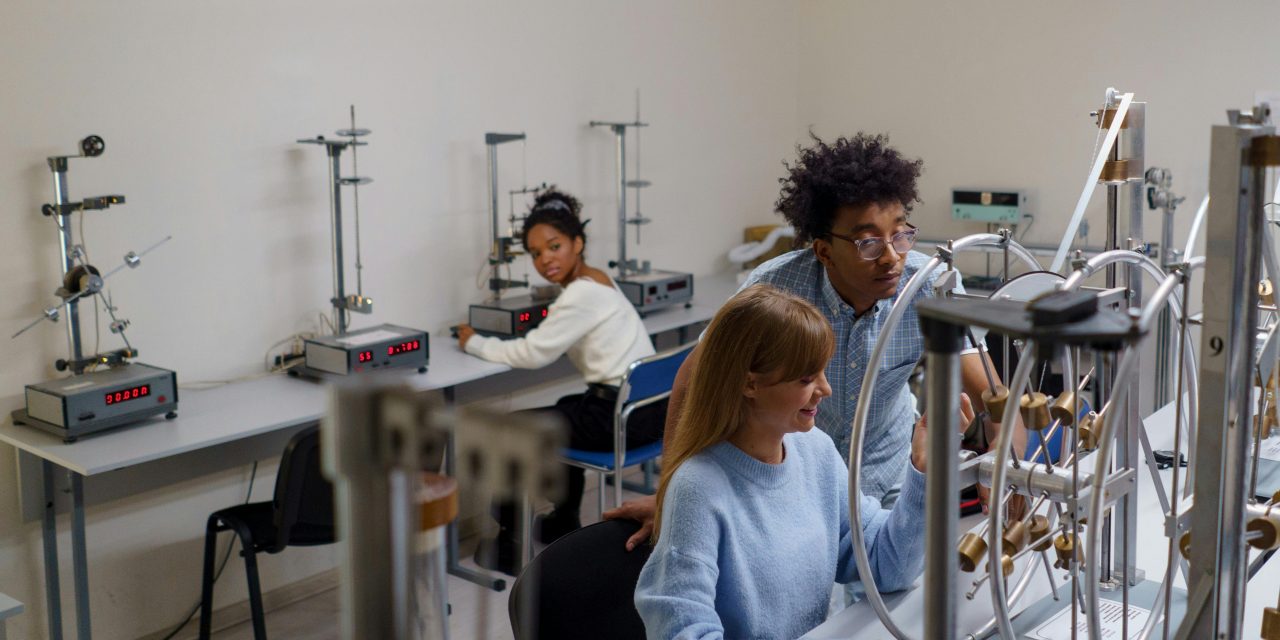Lab experiments are a crucial part of AP Physics preparation, providing students with hands-on experience that deepens their understanding of theoretical concepts. While Key2PHYSICS offers a comprehensive suite of over 200 lessons covering everything from basic principles to advanced topics, incorporating physical lab experiments into your curriculum can significantly enhance the learning experience. This blog post highlights some of the top lab experiments for AP Physics prep and how to effectively integrate them with the extensive resources available on Key2PHYSICS.
1. Measuring Acceleration Due to Gravity
Objective: Measure the acceleration due to gravity using a free-fall method.
Materials:
- Stopwatch
- Meter stick or measuring tape
- Object to drop (e.g., ball or weight)
- Data recording tools
Procedure:
- Drop an object from a known height and time how long it takes to reach the ground.
- Repeat the experiment several times to calculate the average time.
- Use the formula

to determine the acceleration due to gravity.
Learning Outcome: This experiment helps students understand acceleration and gravity’s influence on falling objects. It complements Key2PHYSICS lessons on Displacement, Time, Velocity, and Speed, and Falling Objects.
2. Ohm’s Law and Circuit Analysis
Objective: Explore the relationship between voltage, current, and resistance in a circuit.
Materials:
- Battery or power supply
- Resistors of different values
- Ammeter
- Voltmeter
- Wires and connectors
Procedure:
- Set up a circuit with a battery and a resistor.
- Measure the current and voltage across the resistor.
- Change the resistor value and record the new measurements.
- Plot the data to verify Ohm’s Law:

Learning Outcome: This experiment solidifies understanding of Ohm’s Law, reinforcing Key2PHYSICS lessons such as Ohm’s Law: Resistance and Simple Circuits, Resistors in Series and Parallel, and Kirchhoff’s Rules.
3. Simple Harmonic Motion
Objective: Study the characteristics of simple harmonic motion using a mass-spring system.
Materials:
- Spring
- Masses
- Stopwatch
- Ruler or measuring tape
Procedure:
- Attach a mass to the spring and measure its displacement from the equilibrium position.
- Pull the mass down and release it to observe the oscillatory motion.
- Measure the time period of oscillation and compare it with theoretical predictions.
Learning Outcome: Students gain insights into oscillatory motion, which aligns with Key2PHYSICS topics like Simple Harmonic Motion: A Special Periodic Motion, Energy and the Simple Harmonic Oscillator, and Uniform Circular Motion and Simple Harmonic Motion.
4. Electric Field Mapping
Objective: Map the electric field around various charge distributions.
Materials:
- Small test charges
- Equipment to measure electric field (e.g., voltage probes)
- Graph paper or plotting software
Procedure:
- Place a source charge in a fixed position.
- Measure the electric field at various points around the charge using test charges or field sensors.
- Plot the field lines on graph paper or use software to visualize the field distribution.
Learning Outcome: This experiment provides practical experience with electric fields, complementing Key2PHYSICS lessons like Electric Field: Concept of a Field Revisited, Electric Field Lines: Multiple Charges, and Coulomb’s Law.
5. Magnetic Field of a Current-Carrying Wire
Objective: Investigate the magnetic field created by a current-carrying wire.
Materials:
- Long, straight wire
- Power supply
- Compass or magnetic field sensor
- Ruler
Procedure:
- Pass a current through the wire and use a compass or sensor to map the magnetic field around the wire.
- Measure the magnetic field strength at various distances from the wire.
- Verify the relationship between the magnetic field and the current using Ampère’s Law.
Learning Outcome: This experiment enhances understanding of magnetic fields, supporting Key2PHYSICS lessons on Magnetic Fields and Magnetic Field Lines, Magnetic Force on a Current-Carrying Conductor, and Ampère’s Law.
Integrating Key2PHYSICS
While these lab experiments are essential for hands-on learning, Key2PHYSICS can significantly enhance your teaching by offering:
- Interactive Simulations: Virtual labs and simulations that replicate real-world experiments, allowing students to explore concepts covered in topics like Kinematics in Two Dimensions, Projectile Motion, and Newton’s Laws of Motion before or after physical labs.
- Customizable Problem Sets: Practice problems related to lab experiments that reinforce theoretical understanding and prepare students for exams. Key2PHYSICS offers extensive problem sets on topics like Work, Energy, and Power, Conservation of Momentum, and Thermodynamics.
- Instant Feedback: Immediate feedback on practice problems helps students correct mistakes and enhances their understanding of complex topics like Quantum Mechanics, Electromagnetism, and Optics.
Conclusion
Lab experiments are a vital component of AP Physics preparation, providing students with practical experience that reinforces theoretical concepts. By integrating these top lab experiments into your curriculum and leveraging the extensive resources available on Key2PHYSICS, you can offer a comprehensive learning experience that equips your students with the skills and knowledge necessary to excel in AP Physics.

